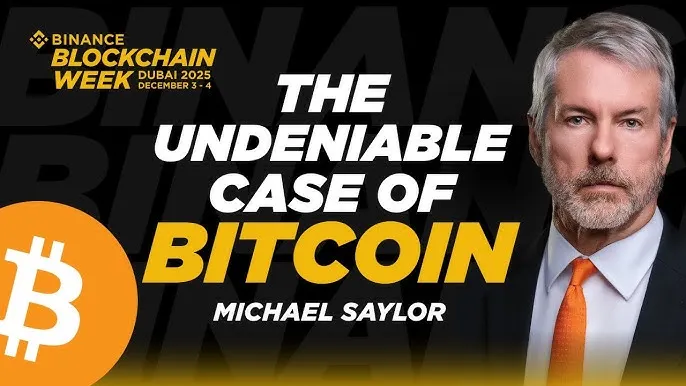The BNB Treasury led by the richest Chinese person: After a 600% surge, is the upward momentum still there?
- 核心观点:BNB财库借壳VAPE,打造加密资产上市公司。
- 关键要素:
- 5亿美元PIPE融资聚焦BNB持仓。
- 10X Capital主导,机构背书。
- 股价盘前暴涨1800%。
- 市场影响:加密资本集中度风险加剧。
- 时效性标注:中期影响。
On July 28, the long-rumored "orthodox army" of the BNB treasury finally fell on a small nicotine e-cigarette company called VAPE. This small-cap stock, which previously had a market value of less than 10 million US dollars, unexpectedly became the lucky winner personally selected by the richest Chinese man.
The news was rushed out in advance, causing the stock to surge by over 1,800% before the market opened. After the opening, the stock price jumped from Friday's closing price of $8.88 to an intraday high of $82.88.
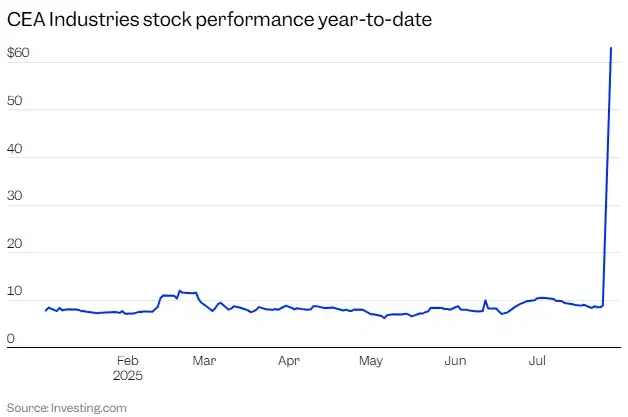
A source familiar with the matter told BlockBeats that Binance's investment team had already begun preparing for the acquisition of a shell company and private equity financing for the BNB Treasury project as early as early July. Another source familiar with the matter stated that to mitigate the risk of insider trading before the acquisition, the team simultaneously acquired several small US shell companies, only settling on VAPE at the last minute.
Behind this stock price movement is a PIPE private financing agreement - the amount is as high as US$500 million, jointly led by 10 X Capital and YZi Labs, with the intention of making VAPE the world's largest listed BNB treasury company.
This is not a retail investor frenzy, but a capital experiment with a sophisticated structured design - a new arbitrage path of "compliant holding of BNB + valuation premium of listed companies", and it may also be a parallel narrative breakthrough for the Binance ecosystem.
VAPE, a previously unknown company, is being remembered by the wider capital market as a key variable in the "BNB treasury" narrative.
Dissecting the BNB Treasury’s Operational Path: From Shell to Valuation Leverage
On July 28, VAPE (formerly CEA Industries) officially announced the closing of a PIPE private placement financing led by 10X Capital and YZi Labs. The initial financing amount reached US$500 million, including US$400 million in cash and US$100 million in crypto asset subscriptions. In addition, if all the additional warrants are exercised, the total financing amount can be expanded to a maximum of US$1.25 billion.
This financing is not only of astonishing scale, but also has a clear positioning: VAPE aims to create the world's largest, publicly listed BNB treasury company, introduce BNB into the capital market, and attract compliant funds to participate in the BNB Chain ecosystem through an asset allocation model.
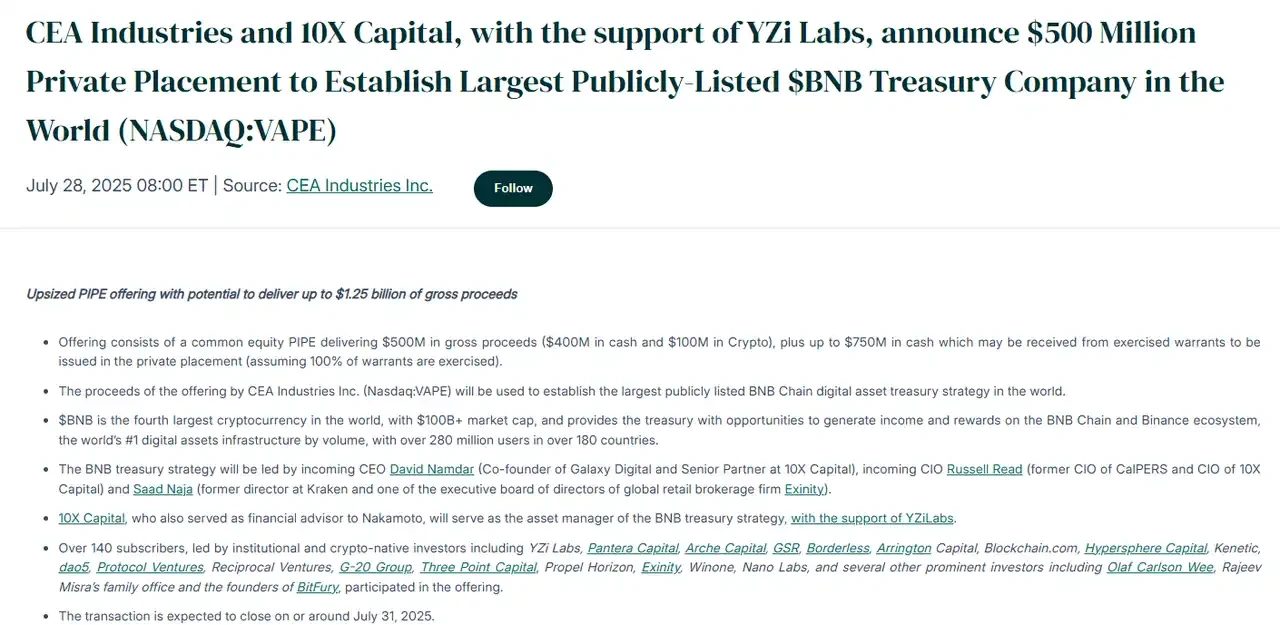
This also means that VAPE is no longer the hardware or retail supplier of the past, but has transformed into a financial structure platform focusing on BNB, integrating the value and profit mechanism of BNB into the capital structure of listed companies.
Following the completion of the PIPE financing, VAPE will be led by a core team with institutional and digital asset backgrounds: David Namdar (co-founder of Galaxy Digital and current senior executive at 10X Capital) will serve as CEO; Russell Read (former Chief Investment Officer of CalPERS and current CIO of 10X Capital) will serve as CIO; and Saad Naja (a veteran operator with backgrounds at Kraken and Exinity) will also join the company's executive team.
At the same time, 10 X Capital itself will serve as the asset manager of the BNB treasury, responsible for structural design, capital operation and subsequent strategy implementation; and YZi Labs provides strategic support to help the PIPE placement proceed smoothly. More than 140 institutions and crypto funds (such as Pantera Capital, Blockchain.com, GSR, Arrington, etc.) participated in this financing, forming a strong capital endorsement.
BlockBeats analyzes VAPE's announcement, stating that the proceeds from the financing will be used to establish a long-term treasury strategy focused on BNB. Over the next 12-24 months, VAPE will build an initial BNB holding and increase its holdings through methods such as ATM (At-The-Market) issuance. The company will also consider participating in BNB staking, lending, and DeFi protocol yield farming to generate structured returns while maintaining a conservative risk framework.
This operating model is similar to MicroStrategy's BTC treasury model, but focuses on BNB, which has stronger ecological uses. It supplements the logic of currency holding value-added through income-based strategies, giving it cash flow and premium space.
Upon closing of the PIPE, VAPE will become one of the largest publicly traded companies offering exposure to a single Layer-1 blockchain.
Simply put, this round of funding ultimately gave the company a $1.25 billion crypto arsenal to buy BNB. By comparison, SharpLink (SBET), one of the earliest companies to bet on the ETH treasury concept, has only raised $525 million in total funding.
After the transaction is completed: how will the stock price go?
Following the signing of the PIPE, VAPE announced that the financing is expected to close by July 31, 2025. At that time, the funds will be available and the company's updated capital management strategy will take effect. According to the announcement, the company's common stock will continue to trade on the Nasdaq Capital Market under the symbol "VAPE."
PIPE financing is essentially a targeted share issuance that "exchanges a discount for funds." Simply put, the company offers a discount on shares to specific investors in exchange for a substantial amount of capital. The primary financing amount for VAPE is $500 million, of which $400 million is in cash, meaning the remaining $100 million is in BNB assets. This comes with a warrant mechanism that can raise up to $1.25 billion. In short, the company will issue a large number of new shares and warrants to PIPE investors.
This will directly lead to two structural results: the original shareholders' shareholding ratio will be diluted. If calculated according to the fully diluted method, the voting rights and income rights of the old shareholders will decline significantly; the company's capital structure will be complicated. Warrants, lock-up clauses, staged exercise mechanisms, etc. will make the company's valuation method in the capital market more inclined to the "structural model" rather than the fundamental model.
With the completion of the PIPE placement, VAPE's equity structure will shift from a "controlling type" to a "circulating type", especially after the warrants are exercised, the company's freely floated share capital will increase by an order of magnitude.
This is particularly evident in the PIPE terms of VAPE: this round of transactions has designed a large-proportion warrant mechanism, allowing investors to subscribe to the company's new shares at a price lower than the market price at a specific time point, forming a typical warrant + placement combination arbitrage structure.
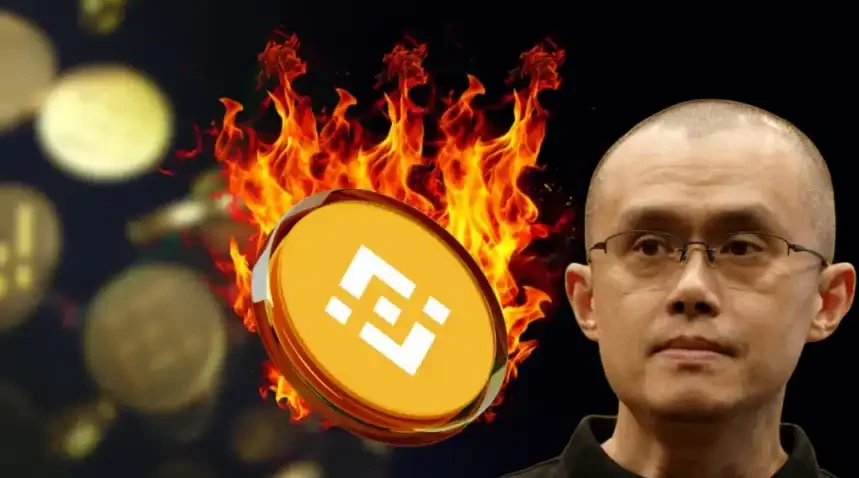 Image source: crypto-economy
Image source: crypto-economy
Specifically, this type of warrants generally have the following characteristics: extremely low pricing: far lower than the public market share price, creating potential arbitrage space; phased unlocking: some warrants are unlocked upon completion of financing, while the rest have price triggers, time rollovers and other mechanisms; may be executed dynamically in conjunction with market prices: when the stock price is higher than a certain threshold (such as 2 to 3 times the PIPE pricing), forced exercise or accelerated conversion clauses may be triggered.
Under this structure, VAPE stock price behavior is driven not only by fundamentals but also by the behavior of PIPE investors. Once valuations deviate from realistic asset levels, this structure creates a strong incentive to cash out, ultimately becoming a source of liquidity shocks.
So when it comes to stock prices, will it go up or down?
We will analyze VAPE based on existing PIPE cases. This structural game generally presents the following three-stage path:
Phase 1: Expectation-driven phase (already occurring)
After the PIPE announcement was released on July 28, VAPE's stock price soared 800% in pre-market trading, from $8.88 to the $80 range, triggering multiple rounds of circuit breakers. At this time, the market had not yet paid attention to the fundamentals, and only priced based on the narrative expectations in the announcement, forming a strong speculative sentiment.
Since the financing has not yet arrived and the subscription warrants have not been unlocked, the market is in a "low liquidity, high sentiment, and no supply" structure, and the stock price is extremely sensitive to expectations.
Phase 2: Structure Release Phase (after transaction completion)
Once the transaction is completed, expected on July 31, and funds are in place, some PIPE investors will receive initial shares and transferable warrants.
At this point, the market enters a delicate range: if the stock price remains high, warrant holders may choose to exercise their warrants quickly to cash out, resulting in price suppression; if the market loses confidence in the treasury model, early arbitrageurs will leave the market as soon as possible; if the company discloses that it did not build a BNB position as expected, it will also weaken the expectation of "on-chain NAV anchoring".
During this phase, volatility increases significantly, and pricing becomes driven by a shift from “value anchoring” to “capital behavior.”
Phase 3: Valuation regression or secondary narrative launch
If BNB performs strongly and the company releases detailed on-chain revenue, the market may refocus on the "Crypto NAV+" model, driving valuations into a second surge; if market sentiment cools or PIPE parties continue to cash out, the company's stock price will return to the asset value center or enter a liquidity vacuum zone.
This is also the key stage where most PIPE projects eventually diverge - some enter the secondary long-term transaction logic, while others become one-off cases of "telling the story and leaving the market".
Rising prices may come from structural scarcity, while falling prices often start from a loss of liquidity. Both paths have been repeatedly seen in other PIPE cases. Therefore, rising and falling prices are not about value judgments, but about the speed of liquidity release.
Shell company choice: What conditions does VAPE have?
If we trace the story of VAPE back further, we will see a completely different starting point.
VAPE's predecessor was CEA Industries, an engineering equipment company specializing in indoor agriculture and cannabis temperature control systems. Its subsidiary Surna mainly provides services such as LED lighting, air circulation, and hydroponic equipment, and its customers are mainly North American cannabis growers. The company has long been in a "three lows" state of low growth, low profits, and low market value.
According to data from StockAnalysis and TipRanks, the company's annual revenue will be less than US$6 million by the end of 2024, its market capitalization has long hovered below US$10 million, and its US stock circulation is extremely low.
In 2024, the company attempted its first strategic transformation: it acquired the central Canadian vape chain brand Fat Panda for 18 million Canadian dollars. The latter has 33 stores, annual revenue of more than 38 million Canadian dollars, and an EBITDA rate of nearly 21%. This is an attempt to shift from a "hardware seller" to a "terminal retailer", marking the transition of VAPE from an equipment supplier to a consumer brand.
But this is not enough to support a revaluation of the company.
Therefore, VAPE was not particularly eye-catching in the past, and could even be described as a "drowning company in the capital market." However, these very flaws have become the most valuable qualities of a "shell company": a sufficiently small shell; a sufficiently clean equity structure; market capitalization potential to be activated; and a narrative vacuum in the crypto market (BNB exposure).
For VAPE, whether it can become a "MicroStrategy of BNB" case remains to be verified. But what is certain is that it is no longer the original e-cigarette company, but has become a programmable shell embedded in the capital game - the shell is a US-listed company, the core is a structured financial instrument, and the soul is the ability to manipulate narratives and emotions.
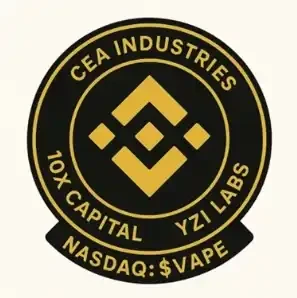
Control and core team: Who is driving this financing?
Behind this transformational experiment of "trading assets for valuation," VAPE serves as a financial vehicle, not an operating entity. The true driving force behind this transformation is a team of traders with a core focus on capital structure—a mixed team with backgrounds in finance and crypto. Their goal isn't simply to secure a round of financing, but to build a self-contained valuation loop: from primary placements to building on-chain asset positions, and finally to releasing narratives in the secondary market.
After the PIPE was signed, the company's actual control structure shifted. The original management team, primarily with industrial and retail backgrounds, lacked the capabilities to lead on-chain treasury and structured asset management. True control gradually shifted to the financing leaders—10X Capital and YZi Labs.
10X Capital, the lead institution in this PIPE, has long focused on SPAC mergers and acquisitions, cross-border capital arbitrage, and structured transactions, making it a classic "leveraged capital engineer." Since 2023, the team has attempted to expand the MSTR model to ETH, SOL, and even LSD. Their recent bet on BNB clearly aims to replicate MicroStrategy's treasury + valuation compounding structure.
YZi Labs: The strategic advisor for this round of transactions, widely believed in the industry to have direct ties to the CZ Family Foundation, is a key force behind BNB's treasury and path to a public company. This firm's endorsement is almost seen as explicit support from the Binance camp. In the VAPE project, it participated in the early screening of shell companies, assisted in media coverage, and collaborated with some investors and the market making team to develop a narrative strategy of "position building, exposure, and valuation derivation."
The most significant characteristic of this capital structure is that VAPE is no longer a creator of value itself, but rather a platform designed to facilitate its release. 10X Capital provides the structure and pacing, YZi Labs provides the narrative and channels, and BNB is embedded as the underlying asset. Together, these three parties complete a closed-loop design from the asset side to the market side.
Whether this story holds true ultimately depends on whether on-chain positions can be cashed out and whether market confidence can be sustained. For most retail investors and bystanders, the emergence of VAPE isn't the end, but rather the prelude to the accelerated arrival of the "era of structural arbitrage."
 Image source: bankless
Image source: bankless
end
In a conversation among investors circulating on Telegram, someone made the calculation: the entire crypto industry has only $7-15 billion in active capital available for VC and liquidity fund allocation. Vape's current PIPE round, with a maximum projected $1.25 billion, could absorb approximately 5-10% of the industry's investable capital in an extreme scenario.
“I’ve never seen a non-BTC/ETH/SOL project siphon off so much money in a single deal,” he said. “And this company will likely never recycle this money back into the industry.”

This is not only a risk issue of excessive capital concentration, but also means that the already tight liquidity in the crypto industry is being "siphoned off" by an unverified model.
In the bull market, liquidity should be used to activate diversified innovation and provide flexibility for early projects such as DeFi, payment, and infrastructure. Today, these funds are concentrated on a "story shell" with a nested PIPE structure and shell resource speculation. If VAPE succeeds, it will certainly replicate more encrypted versions of MicroStrategy; but if it fails, it may become a typical example of industry-level resource mismatch.
Capital can write narratives and create bubbles. At the intersection of crypto finance, everything looks like a victory for structural arbitrage, until the moment when liquidity is completely exhausted, it is known whether there is "blood-making ability".


